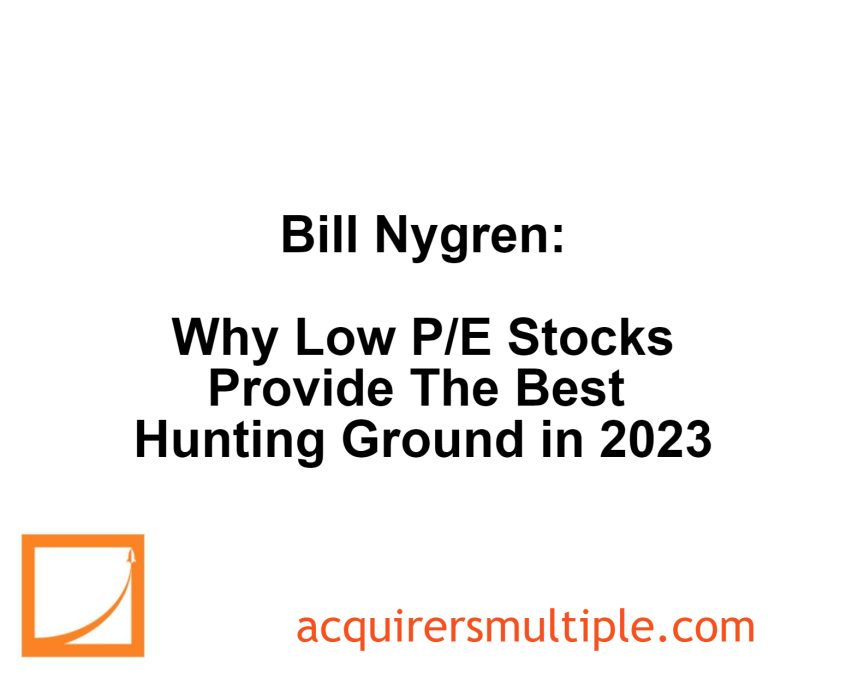In his latest Q3 2023 Market Commentary, Bill Nygren explains why low P/E stocks provide the best hunting ground in 2023 because there is no observable decline in business quality in the 50 lowest-ranked companies by P/E ratio on the S&P 500 today compared to the ones that made that list in previous periods. Here’s an excerpt from the commentary:
Nygren: This idea that, at the right price, growth can be a value is terribly confusing to those who treat growth as the opposite of value. The opposite of cheap isn’t growth; it’s expensive.
So instead of looking at growth versus value, we look at low P/E versus high P/E. A convenient way is to rank order the S&P 500 by P/E ratio, comparing number 50 to number 450.
Currently, the 50th lowest P/E stock sells just over 8 times earnings, and the 50th highest sells at 60.
So, the highest priced stocks are about 7 times more expensive than the lowest priced. Over the 30-plus years we have data, the P/E ratio averages about 4, bouncing between 3 and 5. (So, if there are 50 stocks below 10 times earnings, there are 50 over 40.) It was meaningfully higher only one time—when it hit 9 times at the end of the internet and tech bubble in 2000.
When we compare the 50 lowest ranked companies by P/E ratio on the S&P 500 today to the ones that made that list in previous periods, we don’t observe any decline in business quality.
Therefore, considering both the relatively high price of the higher P/E companies and the solid business quality of the lower P/E companies—we believe that low P/E stocks today present a better hunting ground than they normally do.
Last year we bought depressed stocks of high-growth businesses, such as Uber, at a double-digit free cash flow yield; Workday at a low price relative to sales; and Adobe at only a slightly higher than average P/E ratio. This year, after strong outperformance, we sold them and bought much lower P/E stocks.
Here’s a fun way to think of it: In 2022, we bought a share of Adobe for about three shares of CVS Health. (CVS was just under $100 and Adobe under $300). This year we sold Adobe to buy more than six shares of CVS. (Adobe increased to well over $400 and CVS fell to $70.) We thought Adobe was cheap when we bought it, despite it being a high-growth business, and that CVS was fully priced when we sold it, despite it having a below-average P/E ratio.
As Benjamin Graham said, “The intelligent investor is a realist who sells to optimists and buys from pessimists.” The optimists who buy exciting businesses regardless of price have been on quite a run, resulting in today’s unusually wide spread of P/E ratios.
Just as we recommend that investors rebalance their exposure to stocks and bonds after periods of extreme performance—selling what went up to buy what went down—we think investors should do the same for investment styles. Following strong outperformance, selling some high P/E stocks to buy low P/E stocks might both reduce your risk and increase your expected return. That’s why the Oakmark Fund today looks more like a traditional value fund than it has in a long time.
You can read the entire letter here:
Bill Nygren – Value vs. growth: Then and now | U.S. Equity market commentary 3Q23
For all the latest news and podcasts, join our free newsletter here.
Don’t forget to check out our FREE Large Cap 1000 – Stock Screener, here at The Acquirer’s Multiple:



